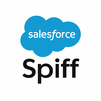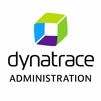
The Cloud Developer – Professional course provides in-depth training on building, optimizing, and managing applications in modern cloud environments. It covers key areas such as cloud architecture, API integration, container orchestration, DevOps automation, and security best practices. Designed for experienced developers, the course combines theoretical concepts with practical labs to prepare participants for designing scalable, resilient, and cloud-native applications across public, private, and hybrid cloud platforms.
Cloud Developer – Professional Training Interview Questions Answers - For Intermediate
1. How do availability zones and regions support fault tolerance in cloud platforms?
Availability zones are isolated data centers within a region, and regions are geographically distributed areas. By deploying applications across multiple availability zones and regions, cloud solutions can achieve high availability and fault tolerance. This setup minimizes the impact of failures, such as power outages or hardware issues, in a single zone or region.
2. What are the key differences between microservices and monolithic architecture?
Monolithic architecture involves building an application as a single, tightly integrated unit. In contrast, microservices break the application into loosely coupled, independently deployable services. While monolithic systems can be easier to develop initially, microservices offer greater scalability, flexibility in technology stacks, and better fault isolation, which are well-suited for cloud environments.
3. Why is auto-scaling important for cloud applications?
Auto-scaling automatically adjusts computing resources based on traffic or performance metrics, ensuring optimal application performance during high demand and reducing costs during low usage. This dynamic scaling eliminates manual intervention and ensures applications remain responsive and efficient under varying workloads.
4. How is data consistency maintained in distributed cloud environments?
Maintaining data consistency involves using strategies such as eventual consistency, strong consistency models, distributed transactions, and conflict resolution techniques. Cloud developers often choose the appropriate consistency model based on the application’s requirements, ensuring the right balance between availability, performance, and accuracy.
5. What are the benefits of using managed cloud services?
Managed services handle the operational aspects of infrastructure, databases, monitoring, and security, allowing developers to focus on application development. These services reduce administrative overhead, offer built-in scalability and high availability, and ensure best practices in areas such as backup, patching, and compliance.
6. What is the importance of tagging resources in a cloud environment?
Tagging resources involves assigning metadata to cloud assets for identification, cost tracking, and organization. Proper tagging enables better resource management, simplifies automation, and improves cost allocation and security compliance by categorizing resources according to projects, environments, or departments.
7. How do edge computing and cloud computing complement each other?
Edge computing processes data closer to the source, reducing latency and bandwidth usage, while cloud computing offers centralized processing and storage. Together, they enable real-time responsiveness and scalable backend processing, supporting applications like IoT, autonomous systems, and smart cities.
8. What are the common logging and monitoring tools used in the cloud?
Cloud developers commonly use tools such as AWS CloudWatch, Azure Monitor, Google Cloud Operations Suite, Prometheus, and Grafana. These tools provide insights into system health, performance, and usage patterns. They also support alerting, log aggregation, and visual dashboards, enhancing observability and operational awareness.
9. What is hybrid cloud and why might organizations adopt it?
A hybrid cloud combines on-premises infrastructure with public and private cloud resources. Organizations adopt it for flexibility, data sovereignty, cost optimization, or compliance reasons. It allows businesses to run sensitive workloads on-premises while leveraging the scalability and innovation of public cloud services.
10. What are the main security risks in cloud computing?
Key security risks include data breaches, misconfigured services, insecure APIs, insider threats, and denial-of-service attacks. Addressing these risks requires implementing access controls, encryption, regular audits, secure coding practices, and continuous monitoring across cloud resources.
11. How does DNS play a role in cloud deployments?
DNS (Domain Name System) translates domain names into IP addresses, directing traffic to the correct resources. In cloud deployments, DNS supports traffic routing, load balancing, failover configurations, and service discovery. Managed DNS services also provide scalability, performance optimization, and protection against DDoS attacks.
12. What is the purpose of a Virtual Private Cloud (VPC)?
A VPC is a logically isolated network environment in a public cloud that enables users to define and control virtual networks. It allows configuration of subnets, routing tables, and security policies, offering enhanced security and control over traffic flow between resources.
13. Why is encryption essential in cloud environments?
Encryption protects sensitive data at rest and in transit, preventing unauthorized access. In cloud environments, encryption is crucial for compliance, data privacy, and mitigating security breaches. Most cloud providers offer integrated encryption solutions, including key management and access control mechanisms.
14. How does DevOps align with cloud development practices?
DevOps promotes automation, collaboration, and continuous delivery, which align well with the dynamic nature of cloud environments. Cloud platforms offer tools for version control, CI/CD, infrastructure automation, and monitoring, enabling faster development cycles, improved deployment consistency, and rapid innovation.
15. What is the function of an orchestration platform like Kubernetes in the cloud?
Kubernetes automates deployment, scaling, and management of containerized applications. It provides capabilities such as self-healing, load balancing, and rolling updates. In cloud environments, Kubernetes ensures application availability, simplifies infrastructure management, and supports hybrid and multi-cloud strategies.
Cloud Developer – Professional Training Interview Questions Answers - For Advanced
1. How do Cloud-Native Security Posture Management (CNSPM) tools contribute to securing modern cloud environments?
Cloud-Native Security Posture Management (CNSPM) tools offer continuous visibility, compliance monitoring, and proactive risk identification across cloud-native resources such as containers, Kubernetes, and serverless functions. These tools detect misconfigurations, enforce policy-based governance, and ensure compliance with frameworks like CIS benchmarks and NIST. CNSPM tools often integrate with CI/CD pipelines, providing real-time feedback and preventing insecure deployments. They enhance security by identifying vulnerabilities in workloads, flagging exposed APIs, and ensuring least-privilege access, thereby significantly reducing the attack surface in dynamic and ephemeral cloud environments.
2. What is the role of policy-as-code in cloud infrastructure governance?
Policy-as-code allows organizations to define and enforce governance rules programmatically using declarative syntax. It ensures consistent application of policies across infrastructure, including compliance, security, and operational standards. By integrating with CI/CD pipelines and infrastructure provisioning tools, policy-as-code enables automated enforcement, auditability, and remediation. It supports scalable governance in large cloud environments by preventing unauthorized changes, controlling resource usage, and ensuring data protection practices. Tools like Open Policy Agent (OPA) or AWS Config Rules make policy-as-code integral to modern DevSecOps practices.
3. How do cloud-native applications achieve cross-region data replication and why is it critical?
Cross-region data replication ensures high availability, disaster recovery, and geographic redundancy by duplicating data across multiple regions. It enables applications to serve users from the nearest region, reducing latency, and supports compliance with data residency laws. In the event of a regional failure, replicated data allows systems to resume operations with minimal disruption. Cloud-native applications leverage managed services for replication, ensuring consistency, failover mechanisms, and synchronization. Proper conflict resolution, network optimization, and security configurations are essential to maintain integrity and performance across regions.
4. What are the primary trade-offs between strong consistency and eventual consistency in distributed systems?
Strong consistency ensures immediate visibility of updates across all nodes but can introduce latency and reduce availability in distributed environments. Eventual consistency allows faster responses and higher availability by accepting temporary discrepancies, which are resolved over time. The choice between the two depends on application requirements—financial transactions may require strong consistency, while social media feeds can tolerate eventual consistency. Developers must balance user experience, system responsiveness, and data correctness when architecting distributed cloud applications, often combining both models for different services within the same system.
5. What are the architectural considerations for designing resilient API gateways in cloud-native systems?
API gateways act as intermediaries between clients and backend services, managing routing, rate limiting, authentication, and transformation. Resilient API gateway design includes high availability across multiple zones or regions, autoscaling, and the implementation of circuit breakers and retries. Load balancing and caching help absorb sudden traffic spikes. Security considerations such as token validation, IP whitelisting, and DDoS protection are also vital. Observability through logging and tracing supports monitoring and debugging. Choosing managed gateway services or deploying gateways as containerized microservices offers flexibility based on application needs.
6. How can blue-green and canary deployments reduce risk in cloud application releases?
Blue-green and canary deployments are deployment strategies that minimize downtime and reduce the impact of potential defects. Blue-green involves maintaining two identical environments—traffic is switched to the new version after successful testing, allowing rollback by reverting traffic. Canary deployments gradually release new features to a subset of users, enabling performance monitoring and early issue detection before full rollout. These approaches support safer continuous delivery, user validation, and controlled exposure, significantly enhancing release confidence in high-velocity cloud development environments.
7. In what scenarios is a cloud burst strategy appropriate, and what challenges must be addressed?
Cloud bursting is suitable for applications with variable or seasonal workloads where the on-premise infrastructure handles baseline demand and excess traffic is redirected to the public cloud. This strategy helps manage cost while accommodating peak loads. Key challenges include application compatibility, data synchronization, latency, and security. It requires seamless integration between private and public environments, automated scaling policies, and robust networking to ensure performance parity. Careful planning and monitoring are essential to avoid service disruptions and cost overruns during burst events.
8. What is FinOps, and how does it relate to cloud development teams?
FinOps is a financial management practice focused on maximizing cloud investment efficiency through collaboration between engineering, finance, and operations. For cloud development teams, FinOps means being aware of the cost implications of architecture decisions, optimizing usage, and integrating cost visibility into development pipelines. It encourages developers to adopt cost-efficient designs, use right-sized resources, and select appropriate pricing models. Through FinOps, teams gain shared accountability for cloud spend, enabling better budgeting, forecasting, and governance across the development lifecycle.
9. How does latency affect the design of real-time cloud applications, and what optimization strategies are available?
Latency directly impacts user experience in real-time cloud applications like gaming, video conferencing, or financial trading. Design strategies to mitigate latency include placing resources in edge locations, using content delivery networks, implementing efficient serialization protocols, and minimizing external dependencies. Load balancing, asynchronous processing, and connection pooling also reduce delays. Observability tools help identify latency bottlenecks. Additionally, developers can apply adaptive algorithms to handle varying network conditions and prioritize critical data flows, ensuring responsiveness across diverse user environments.
10. What is the difference between orchestration and choreography in microservices, and when should each be used?
Orchestration involves a central controller that directs service interactions, offering a structured approach with better visibility and error handling. Choreography allows services to communicate through events without central coordination, promoting autonomy and scalability. Orchestration is preferred in scenarios requiring strict process control and monitoring, such as order fulfillment systems. Choreography suits highly decoupled systems where services evolve independently, such as event-driven architectures. Choosing between the two depends on the level of control, maintainability, and scalability required in the cloud-native solution.
11. How can developers implement effective secrets management in cloud-native applications?
Secrets management involves securely storing and accessing sensitive credentials such as API keys, passwords, and certificates. Developers use centralized secret managers provided by cloud platforms, which offer features like encryption-at-rest, access policies, rotation, and audit logging. Secrets should never be hardcoded in applications or stored in version control. Instead, they should be injected at runtime through environment variables or mounted volumes. Integration with IAM services ensures least privilege access, while automation enables secret rotation and revocation in case of compromise, thereby enhancing security posture.
12. How does observability differ from monitoring, and why is it essential in cloud-native systems?
Monitoring focuses on collecting metrics and logs to detect known issues, while observability enables understanding the internal state of a system based on external outputs. In cloud-native systems, where services are distributed, dynamic, and short-lived, observability is critical for debugging complex failures. It encompasses logs, metrics, traces, and events, often using tools that support correlation across components. Observability empowers teams to ask new questions about system behavior, detect unknown issues, and gain insights into performance, security, and reliability, ensuring faster incident resolution and continuous improvement.
13. What challenges do stateful workloads pose in Kubernetes, and how can they be managed?
Stateful workloads require persistent storage and consistent identity, which complicates scheduling, scaling, and recovery in Kubernetes. StatefulSets manage these workloads by ensuring ordered deployment, stable network identity, and volume persistence. However, challenges include handling data replication, backup, failover, and storage performance. Cloud-native storage classes, volume snapshots, and dynamic provisioning address some of these concerns. Developers must also consider storage latency, availability across zones, and security controls. Careful design of readiness probes and graceful termination policies ensures smooth lifecycle management for stateful containers.
14. How does autoscaling differ between traditional virtual machines and containerized workloads?
In traditional VM-based environments, autoscaling involves provisioning or deprovisioning entire instances, which can take minutes and requires predefined configurations. For containerized workloads, autoscaling is more granular and faster, adjusting the number of pods or containers based on real-time metrics such as CPU usage or request rate. Horizontal Pod Autoscalers (HPAs) in Kubernetes and container-aware services in cloud platforms enable dynamic response to demand. This results in better resource utilization, cost efficiency, and reduced response times. However, proper metric selection and threshold configuration are essential for effective autoscaling.
15. What is the role of distributed tracing in microservices, and how does it aid performance tuning?
Distributed tracing tracks requests as they traverse multiple services, providing end-to-end visibility into execution paths, latency, and dependencies. It helps identify slow or failing components, uncover bottlenecks, and optimize resource allocation. In microservices, where interactions are asynchronous and span diverse technologies, tracing is critical for understanding system behavior and debugging complex issues. Tools like Jaeger or AWS X-Ray integrate with instrumentation libraries to collect spans and visualize request flows. Tracing enables data-driven performance tuning, service optimization, and improved user experience.
Course Schedule
| Dec, 2025 | Weekdays | Mon-Fri | Enquire Now |
| Weekend | Sat-Sun | Enquire Now | |
| Jan, 2026 | Weekdays | Mon-Fri | Enquire Now |
| Weekend | Sat-Sun | Enquire Now |
Related Courses
Related Articles
- Top Ten (10) Unavoidable Interview Questions for a Job in Project Management
- Why BIM Revit Architects Are Essential for Future-Ready Infrastructure
- Why you should enroll for SAP S/4 HANA Finance 1909 Certification Online Course?
- Unlocking Utility Efficiency with SAP IS-Utilities
- How IDMC Administration Training Boosts Your IT Career?
Related Interview
Related FAQ's
- Instructor-led Live Online Interactive Training
- Project Based Customized Learning
- Fast Track Training Program
- Self-paced learning
- In one-on-one training, you have the flexibility to choose the days, timings, and duration according to your preferences.
- We create a personalized training calendar based on your chosen schedule.
- Complete Live Online Interactive Training of the Course
- After Training Recorded Videos
- Session-wise Learning Material and notes for lifetime
- Practical & Assignments exercises
- Global Course Completion Certificate
- 24x7 after Training Support











 Join our Live Instructor-Led online classes delivered by industry experts
Join our Live Instructor-Led online classes delivered by industry experts